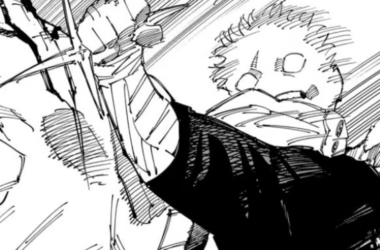Dorothy Miles, a British Deaf poet and pioneer in sign language poetry, holds a remarkable place in both Deaf and poetic history. Her pioneering spirit and passionate embrace of British Sign Language (BSL) and American Sign Language (ASL) have left an indelible impact on Deaf culture worldwide. Through her innovative approach to poetry, Dorothy carved out a unique creative path. One that both celebrated and elevated the beauty of sign language. Dorothy’s journey was not only one of personal discovery but also a lasting contribution to both the Deaf community and the literary world. Her work continues to inspire poets, activists, and Deaf artists globally.
The Early Life of Dorothy Miles
Dorothy Miles was born in 1931 in Wales, growing up in a world where limited support was available for Deaf children. Despite the hardships, Dorothy’s early life was marked by a strong sense of resilience. She had a natural curiosity and love for the arts, although she struggled to connect fully with those around her due to communication barriers. In her early years, Dorothy relied heavily on lip reading and written English, which influenced her poetic style later in life. However, it was only when she discovered sign language that her artistic vision truly blossomed.
Discovering a Voice in Sign Language
It was in her young adulthood that Dorothy first encountered sign language. An experience that would transform her life and ignite her creative passions. Sign language provided Dorothy with an expressive outlet that written words alone could not achieve. Unlike other forms of poetry, sign language allowed her to combine physicality with emotional depth. Opening a door to a form of communication that resonated deeply with her identity. This newfound “voice” became her means to create work that was accessible and meaningful to the Deaf community.
Transitioning to the United States
Dorothy Miles’s journey took a major turn when she moved to the United States. Where she found a vibrant Deaf community that welcomed and encouraged her talents. The cultural environment in the U.S. was conducive to her creativity. She became deeply involved in Deaf art and literature, working with other artists who shared her vision. Here, she was introduced to American Sign Language (ASL), expanding her repertoire and influencing her development as a sign language poet. Her work in the U.S. allowed her to pioneer a new genre of poetry that skillfully blended BSL and ASL.
Collaborations with Deaf Performers
Throughout her career, Dorothy collaborated with other Deaf performers, which strengthened her influence in the Deaf arts community. Working alongside actors, poets, and visual artists, she contributed to a growing movement that celebrated Deaf culture through various forms of artistic expression. These collaborations not only fueled her creativity but also helped her to understand and communicate the collective experiences of Deaf individuals. Her partnerships resulted in memorable performances that showcased the power of sign language poetry as an art form.
The Birth of Sign Language Poetry
Dorothy Miles is celebrated as one of the earliest creators of sign language poetry. A revolutionary form that brought poetry to life through hand movements, facial expressions, and body language. In contrast to written or spoken poetry, sign language poetry is visual and performative, capturing an emotional depth that resonated within the Deaf community. Dorothy’s work embodied the linguistic and cultural richness of BSL and ASL, and her poetry became a medium through which Deaf experiences were articulated and shared. This genre not only empowered Deaf artists but also broadened society’s understanding of sign language as a sophisticated linguistic form.
Dorothy Miles’ Notable Works
Some of Dorothy’s most impactful works include pieces like Freedom Song. A poem that spoke to the universal desire for acceptance and understanding. Her performances often conveyed themes of resilience, pride, and community, reflecting her experiences and those of the Deaf community. These works are still celebrated for their originality and emotive power, demonstrating Dorothy’s skill in using sign language to convey layered and meaningful messages.
Her Influence on British Sign Language
In the UK, Dorothy Miles became an influential figure in advocating for the acceptance and appreciation of BSL. Her work not only highlighted the beauty of the language but also stressed its importance as a tool for cultural expression. Through her poems and performances, she demonstrated the expressive potential of BS. Paving the way for broader recognition and support of Deaf culture in Britain.
Poetry and the Deaf Community
Dorothy Miles’s contribution to the Deaf community goes beyond artistic innovation. She created a space where Deaf individuals could see their lives and experiences represented. Her poetry was deeply personal and simultaneously universal, appealing to Deaf audiences who felt understood and valued through her work. The themes she addressed—identity, love, isolation, and unity—resonated within the community, strengthening connections and fostering pride.
Legacy and Contributions
Dorothy Miles’s impact remains significant, with her pioneering work celebrated at Deaf culture events and educational institutions. Her poetry has inspired countless Deaf and hearing poets alike, and her legacy is often honored through initiatives that support Deaf artists and promote sign language. The establishment of the Dorothy Miles Cultural Centre is one of the many ways her influence is preserved. Offering resources and programs that encourage the continued exploration of sign language poetry.
Dorothy’s Writing Style
Dorothy’s poetry is characterized by its directness, emotional depth, and evocative imagery. Her writing often drew on her personal struggles, using simple yet powerful signs that made her work accessible to a wide audience. Her use of BSL and ASL in her work highlighted the expressive capabilities of sign language, which could convey emotion in ways that spoken words could not.
The Dorothy Miles Cultural Centre
Established in her honor, the Dorothy Miles Cultural Centre supports Deaf arts. Providing a platform for emerging Deaf poets and artists. The center’s mission is to celebrate Dorothy’s vision by nurturing new talent and promoting awareness of Deaf culture through artistic programs and events. The institution has become a valuable resource for the Deaf community, embodying Dorothy’s commitment to expression and empowerment.
Awards and Recognitions
During her lifetime, Dorothy received numerous accolades recognizing her achievements and her influence on the arts. While her work was often recognized within the Deaf community. Her posthumous awards demonstrate the lasting impact of her contributions to both Deaf and mainstream literature. These recognitions highlight her role as a cultural bridge, bringing Deaf experiences to the wider world.







